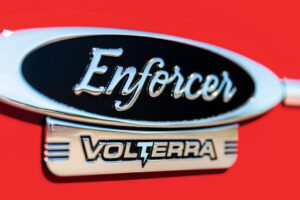Ivan Rich, Technical Manager at Bristol Uniforms, is closely involved in developing and reviewing standards for fire-fighter PPE. He is the secretary for two European committees which include standardisation for Heat and Flame PPE and Fire-fighters’ PPE. Here Ivan explains how international and national standards bodies work together and explores recent developments in this area:
Fire and emergency services across the globe need to know that they can fully rely on the safety and quality of their PPE, whether purchased at home or abroad. To ensure the best level of protection, most countries demand conformity with both national and international standards of performance for PPE. By insisting that any equipment purchased meets appropriate global standards, they can be assured that at the very least the minimum safety requirements will be met, and that the quality will be satisfactory. This helps to break down technical and language barriers between countries and makes it much more straightforward for manufacturers to trade goods and services.
There are currently three major standard-setting bodies on the world stage, European Committee for Standardisation (CEN) which covers Europe, the National Fire Protection Association (NFPA) which covers the USA, Latin America and the Asia/Pacific region, and the International Standards Organisation (ISO) which sets standards worldwide.
In Europe, the first standard for fire-fighters’ PPE was introduced in 1995. Entitled EN469, it became the first PPE standard to cover all countries in the European Union, serving to strengthen overall product safety and quality, and to encourage the sharing and adoption of good practices.
The current version of EN469 is EN469:2005. This is a ‘Harmonised Standard’, which means that rather than being simply voluntary, it supports essential requirements of the new EU PPE Regulation (EU 2016/425) to which all European PPE must comply by 2018.
EN469:2005 was reviewed and updated in 2014, however it was subsequently withdrawn from OJEU due to errors. The standard is now being reviewed and rewritten in discussion with CEN consultants, employed by the EU Commission to monitor and advise on standards development. I sit on a panel group formed by BSI and we recently met for the second time to discuss its revision and further discuss the list of requirements the UK would like to see included.
The NFPA Standard for PPE is adopted in the USA and across the world including Asia, the Middle East and Latin America. NFPA1971, was first published back in 1975 and has undergone numerous revisions since then with the latest being in 2013. NFPA1971:2013 protects firefighting personnel by establishing minimum levels of protection from thermal, physical, environmental, and bloodborne hazards encountered during structural and proximity fire-fighting operations. Its requirements apply to the design, performance, testing, and certification for structural fire-fighting. The revision process has commenced and the next edition will be published in 2018.
The original ISO standard for Protective Clothing for Fire-fighters, ISO 11613, was introduced in 1999. It is currently under revision, being prepared for a Draft International Standard (DIS) ballot. This revised standard will be entitled Protective clothing for fire-fighter’s who are engaged in support activities associated with structural fire-fighting–Laboratory test methods and performance.
ISO has also recently published a new ensemble standard for PPE used by fire-fighters, entitled ISO 11999 – PPE for fire-fighters–Test methods and requirements for PPE used by fire-fighters who are at risk of exposure to high levels of heat and/or flame while fighting fires occurring in structures. There will be 10 parts to the standard (8 have been published) with part 3 giving the requirements for clothing.
It makes sense for national, European and International standards to be drafted and developed in line with each other. So wherever possible, CEN, NFPA, ISO, and many National Standards Bodies (NSBs) work closely together to replicate requirements wherever possible. This makes adhering to standards much easier, and helps to promote global best practice by drawing on international expertise.
Dave Matthews is a world leader on PPE standards, leading on a number of BSI, CEN and ISO committees. He comments:
“It is vital for both manufacturers and end users to have a level playing field to protect against any unscrupulous suppliers of PPE”.
Under the ‘Vienna Agreement’, for example, CEN has agreed to collaborate with ISO to develop a common European and international standard. More than 30% of the European standards adopted by CEN are identical to international standards. These EN/ISO standards have the dual benefits of automatic and identical implementation across Europe and globally. Some examples include EN ISO 11612:2015 which specifies minimum performance requirements for clothing to protect against heat and flame, and EN ISO 14116:2015 which details performance requirements for the limited flame spread properties of materials and protective clothing.
NSBs such as the British Standards Institute (BSI) have to adopt CEN and ISO standards (EN/ISO) so that by adhering to one standard, manufacturers can easily adhere to them all. NSBs outside Europe such as Standards Australia, often choose to adhere to ISO standards or have their own standards (AS/NZS).
Ultimately, it is down to the customer to decide which standards they would like their PPE to follow, although clearly those in the EU would be advised to follow EN469 as it a harmonised standard and complies with EU regulation.
There are some who believe this three-tiered approach of developing national, European and international standards is unnecessary and inefficient. In today’s global business world, why not do away with national standards and simply follow international guidelines? However, national standards are an essential fall-back in countless situations, most crucially when a nation is faced with a specific scenario, or where there is strong national demand which may not be reflected internationally.
If a standard does not exist internationally, NSBs are able to create their own. For example, despite European Guidance on how frequently PPE should be cleaned, Europe still rejects calls for a standard that sets criteria for the cleaning, maintenance and repair of fire-fighters’ PPE. This is an issue that many countries are taking seriously, since regular cleaning can guard against the dangerous infiltration of carcinogens, which has been linked to higher incidences of cancer among fire-fighters on the front line. Currently, the only standard in the world setting such criteria is NFPA1851:2014. The UK industry in particular is keen to create a standard to help protect against these health concerns, so BSI is working to develop a national standard to meet this demand.
Finally, many countries in or trading with Europe are keen for an update on the consequences of the UK voting to leave the European Union (EU), what impact this will have on the UK’s membership of CEN, and its future adherence to EN standards. There has been speculation that ‘Brexit’ may trigger a demotion of the UK to Affiliate Member status, currently held by 19 NSBs from EU neighbouring countries.
In response, the British Standards Institute has confirmed it is ‘business as usual’. For the foreseeable future they see no change in their status and obligations as a full member of CEN, or in their membership of ISO. The BSI Director of Standards, Dr. Scott Steedman, who also holds the position of Vice President of Policy at CEN, commented in a recent webinar entitled ‘EU referendum – the UK’s future role in developing European Standards’:
“Our position is that it is absolutely ‘business as usual’ for BSI. Our commitment to the European system is undiminished and our work internationally will not be distracted… We see considerable benefits in retaining the single standard model in the UK. It provides access to the largest integrated tariff-free market in the world.”
It is possible that the UK could retain full membership despite not being part of the EU, like other CEN members such as Switzerland, Norway, Macedonia and Turkey, although it is unclear at this stage whether the UK would need to rejoin EFTA to retain its status.
Bristol Uniforms, for its part, continues to provide PPE to fire-fighters in over 110 countries, offering garments to meet not just EN, but NFPA and ISO standards. We will continue to play an active part in the development of these performance standards covering structural, wildland and technical rescue PPE.
PPE Standards: Perfect and protect
About Fire Buyer
International Fire Buyer is the leading authority in global passive and active fire content, delivering expert news, in-depth articles, exclusive interviews, and industry insights across print, digital, and event platforms. Published 10 times a year, the magazine is a trusted resource for professionals seeking updates and analysis on the latest developments in the fire sector.
To submit an article, or for sponsorship opportunities, please contact our team below.
Read the Latest Issue
Follow us on X
Follow us on X
Click HereFollow us on LinkedIn
Follow us on LinkedIn
Click HereAdvertise here
Reach decision makers and amplify your marketing




































